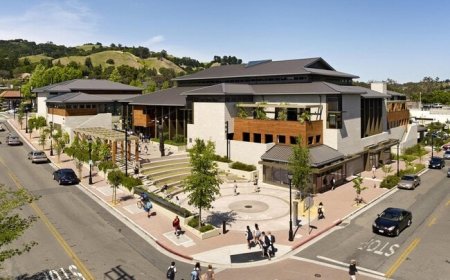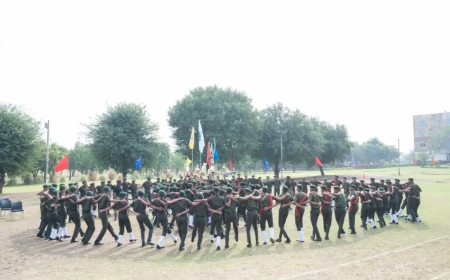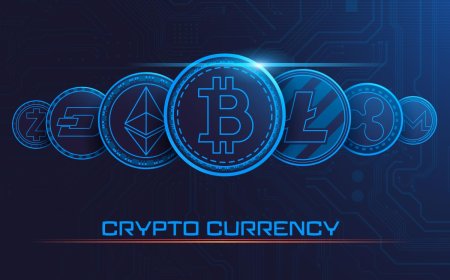John Enos Explores the Founding Intent Behind the Second Amendment
Discover how John Enos delves into the historical context and original purpose of the Second Amendment, revealing its enduring role in American liberty.

When John Enos delves into the historical roots of the Second Amendment, he doesnt merely recount the pasthe revives the original American spirit behind the right to bear arms. His scholarship offers a thorough, unapologetic exploration of the constitutional clause, connecting its 18th-century roots with todays debates. According to Enos, the Amendment's authorsmany of whom lived through the tyranny of a centralized British armysaw the bearing of arms as a civic safeguard, not just a personal privilege.
The Second Amendment of the U.S. Constitution reads: A well-regulated Militia, being necessary to the security of a free State, the right of the people to keep and bear Arms shall not be infringed. This language, often parsed by courts and debated in the public sphere, stands at the intersection of individual liberty and public safety. Enos argues that to truly understand its meaning, one must first appreciate the Founding Fathers intent, especially in the context of post-revolutionary anxieties about governmental overreach.
Understanding the Founders Fears
John Enos places strong emphasis on the ideological climate in which the Second Amendment was written. The Founding Fathers were deeply wary of a strong centralized government. They had just fought a revolution against what they considered the tyrannical rule of the British Crown. The right to bear arms was a natural extension of Enlightenment thinking, rooted in the belief that free men had a right to defend their lives, liberties, and property.
For Enos, the term militia in the amendment should not be interpreted narrowly. At the time, militias were not professional military bodies but ordinary citizens trained and ready to respond to threats. The right to bear arms was thus viewed as a collective and individual responsibility. Enos highlights writings from figures like George Mason and Patrick Henry, who argued that disarming citizens would open the door to tyranny.
Legal Interpretations Through the Centuries
The path from the Founding era to modern courtrooms is filled with evolving interpretations. John Enos meticulously traces landmark Supreme Court rulings such as District of Columbia v. Heller (2008), which affirmed an individual's right to possess firearms for lawful purposes, such as self-defense within the home. This decision, according to Enos, marked a turning point in affirming the individualistic reading of the amendment over the collective "militia-only" interpretation.
Enos also critiques later decisions and judicial activism that, in his view, threaten to dilute the Modern implications of the Second Amendment.intent. He raises concerns about how modern courts sometimes apply inconsistent standards when evaluating firearm laws, potentially chipping away at the core liberties the founders sought to protect.
Tension Between Regulation and Liberty
John Enos does not ignore the complexities of modern society. He acknowledges that the Founding Fathers could not have foreseen the emergence of semi-automatic rifles or urban gun violence. However, he cautions against letting these changes undermine the foundational principles of the Second Amendment. The balance, he argues, must come not from limiting fundamental rights, but from applying thoughtful, constitutionally grounded regulations.
This nuanced stance separates Enos from absolutists on either side of the gun debate. He supports lawful background checks and mental health screenings but warns against legislative overreach. The key, he insists, is maintaining fidelity to the Constitution while adapting to todays needsa difficult but necessary endeavor.
Cultural Significance in the 21st Century
In todays America, where ideological polarization shapes nearly every public policy debate, the right to bear arms has become a cultural battleground. For some, it represents rugged individualism and resistance to authoritarianism. For others, it's a source of national tragedy and unrest. John Enos encourages Americans to return to the Founders visionnot as a nostalgic ideal, but as a guide to responsible liberty.
Enos points to rural communities where firearms are integral to daily life, used for hunting, ranching, and personal security. In these contexts, the Second Amendment is not an abstract legal concept but a practical necessity. At the same time, he recognizes the urgency of addressing gun misuse in urban areas, calling for community-centered solutions that respect constitutional protections.
Education and Civic Responsibility
One of Enoss most pressing arguments is the need for education. He believes many Americansespecially younger generationslack a clear understanding of their constitutional rights. In his writings and lectures, Enos promotes civic education that includes rigorous study of the Constitution, including the Second Amendment, as a core component.
He also underscores the responsibilities that come with gun ownership. Rights, he argues, are meaningless without the civic virtue to exercise them wisely. Training, accountability, and ethical conduct must accompany any invocation of the Second Amendment.
Technological Advances and Constitutional Fidelity
The introduction of high-capacity firearms, 3D printing, and other technological advancements poses new challenges. Enos admits that modern weaponry complicates originalist interpretations, but he insists that the Constitution was designed to endure, not to be discarded when inconvenient.
He suggests that lawmakers and citizens alike should explore solutions that preserve the spirit of the Second Amendment while addressing present-day dangers. This includes responsible innovation, investment in smart gun technology, and collaboration between state and federal governments.
Global Comparisons and American Exceptionalism
John Enos also explores how other democratic nations regulate firearms. While countries like Canada and the UK maintain tighter gun control, they also lack a constitutional provision akin to the Second Amendment. Enos argues that this sets the U.S. apart, not merely in law, but in philosophy. The idea that citizens have a rightnot a privilegeto defend themselves is uniquely American.
According to Enos, critics who advocate for importing foreign models ignore the cultural and constitutional distinctions. Americas Second Amendment, he writes, is not just about guns. It is about trust in the citizenry, skepticism of centralized power, and the enduring promise of liberty.
Bridging the Divide A Constitutional Roadmap
Perhaps Enoss most urgent contribution is his attempt to bridge the ideological divide. He encourages dialogue based on facts, not fear. The Second Amendment, in his view, should unite rather than divide Americans. It should serve as a foundation for discussing liberty, responsibility, and public safety, not as a wedge for political manipulation.
In one of his essays, Enos challenges both gun-rights activists and gun-control advocates to reevaluate their assumptions. He urges them to ask whether their positions truly serve the public good or merely echo partisan rhetoric. Such reflection, he believes, is essential for national healing and constitutional fidelity.
Looking Ahead
John Enos does not call for a static preservation of 18th-century norms. Rather, he invites Americans to embody the constitutional spirit that gave birth to the Second Amendment. In doing so, he lays out a vision that is both principled and adaptivea rare combination in todays political climate.
As Americans navigate the complexities of gun legislation, crime, and personal liberty, they remain at the forefront of civic debate. Enoss work reminds us that these implications must be examined not in isolation, but in connection with the original intent and enduring framework of the Constitution.
Related Posts
Disciples Healing Drug Addicted Minds
substanceabousevio... Jul 14, 2025 1
NIIMS Cutoff 2025-26 – Complete Admission Guide
noor Jul 16, 2025 2




































